How to Restore Our Sense of Well-Being With Dr. Richard Miller
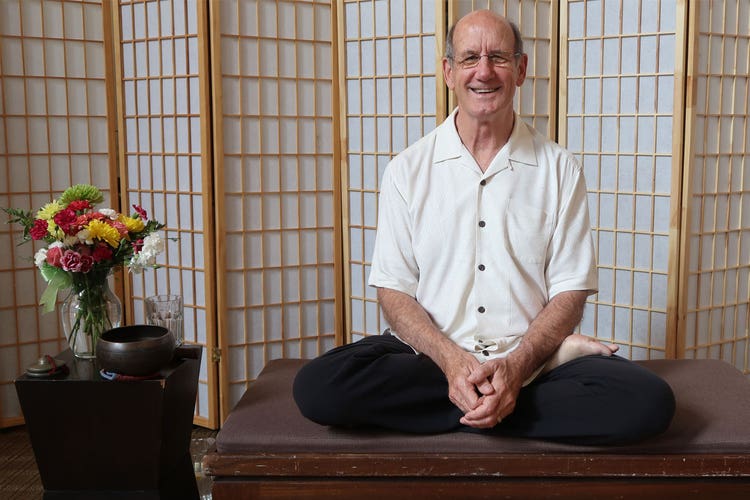
We all know that we need to limit our screen time for our mental and physical health. Less screen time is more time for real-life connections, movement and regeneration. Not surprisingly, there’s a technological solution for that technology problem, as new phones arrive with the capability to help you track your screen time (or there’s an app for that). But we also can tap our own inner “technology” and mind’s eye to help us get back to a better quality of life.
Good mental hygiene entails managing not only the stimulus from our devices, but also our own mind’s activity. Richard Miller, Ph.D is a clinical psychologist, author, yogi and founder of the iRest Institute, and he created a practice called iRest® Yoga Nidra, which is now used and taught by thousands of people worldwide. Miller founded the Institute to help people resolve their pain and suffering, and experience deep healing and peace.
In the process, iRest Institute has cultivated an engaged community dedicated to health, well-being and authentic participation with the world. IRest Yoga Nidra is practiced in yoga studios, community centers, clinics, schools, hospices, correctional facilities and U.S. military hospitals. In fact, in June 2010, iRest Yoga Nidra was endorsed by the U.S. Army Surgeon General and the Defense Centers of Excellence for Psychological Health and Traumatic Brain Injury as a complementary and alternative medicine.
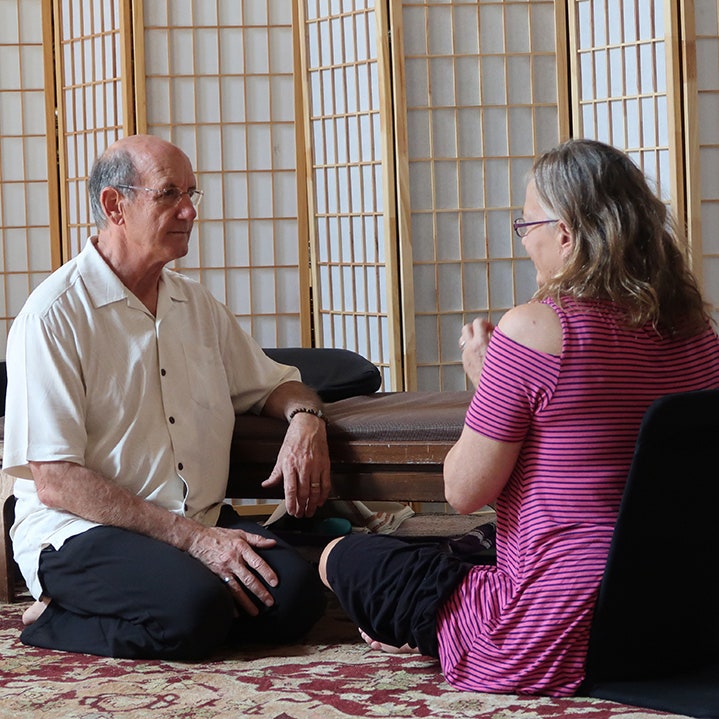
An emerging treatment for pain and trauma

IRest Yoga Nidra combines traditional yogic practice with Western psychology and neuroscience. Miller was inspired by his first experience with yoga nidra, a meditation practice that differs from familiar—and more active—asana and flow-based formats. For Miller, the essential difference lies in “nidra,” a changing state of consciousness and “the ability to stay in a state of inner connectedness regardless of circumstances or states of consciousness.” As Miller studied the practice, he began synthesizing and refining it to relate to aspects of the Western mind.
“The practice was teaching me and my students how to work with emotions, beliefs, body sensations, pain, discomfort, anxiety in a way we could meet them, welcome them, respond to them and become more integrated, healthy human beings,” Miller explains. “Along the way, I started working with people with all sorts of issues, from sleep disorders to chronic pain to homelessness to mental health issues and looking at how could the practice benefit these different populations.”
In 2004, Miller got an unexpected call from Walter Reed Army Medical Center, asking if he would be interested in using the protocol he had developed in a research study. The study participants were active-duty military who had post-traumatic stress from the wars in Afghanistan and Iraq. The response was so positive that the practice was implemented immediately, and since 2006, any member of the military at Walter Reed has access to the program.
Finding the indestructible consciousness
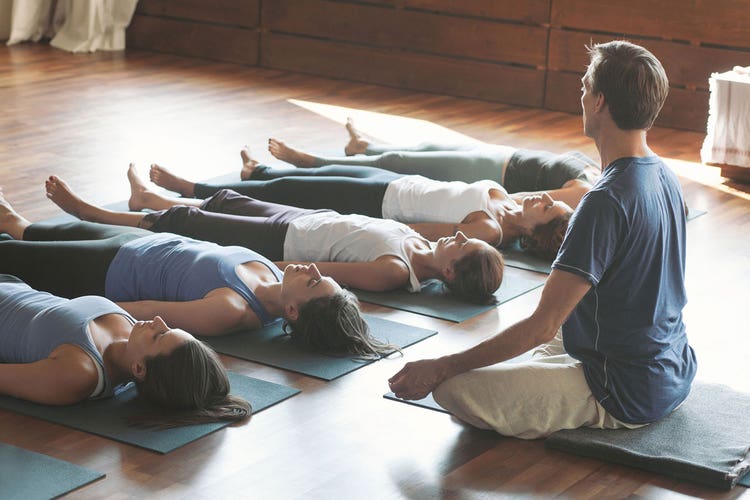
Miller makes an important distinction between consciousness and mindset. “We’re trying to give people the tools to deal with the content—emotions, thoughts, pain—to develop a strong inner sense of unchanging well-being and then to recognize this deeper, unchanging field—call it consciousness with a C or awareness with a big A,” he says. “This is an aspect [of ourselves] that’s really indestructible.”
The distinction, Miller explains, has ramifications for anyone who’s experienced trauma. “Soldiers who have PTSD feel a sense of being harmed. They feel a sense of disconnection, a sense of something’s wrong and a sense of lacking.” Miller uses the first session to introduce them to the unchanging quality of awareness or consciousness. He says they’re quickly able to feel that there is something about them that was never hurt, doesn’t need healing, isn’t lacking and is completely whole.
“Then they’re able to realize, ‘This is who I am,’” Miller explains. “If we lose touch with consciousness, we get overly identified with the aspects that need healing, and we can take it as if, ‘there’s something wrong with me’ versus ‘there’s just something wrong, and let me look at it and see how to work with it.’”
Small and frequent daily practice

Miller says that the focus on consciousness is the part of iRest Yoga Nidra that is restorative, while the healing practices provide integration. The program’s 10 core steps address intention, a sense of purpose, a sense of well-being, and practices that teach participants to use feelings to help them understand how to respond in a given situation. Miller asks people to regard an emotion or a thought they’re having as an ally and a messenger that’s come here to help them: “What’s the message that it’s trying to deliver, and what’s the action that it’s asking you to take in your life?”
IRest Yoga Nidra classes present a 30-minute regimen that can be broken down into smaller parts and applied, as needed. “If they’re in their office behind their desk and they’re starting to feel a stressful moment, they can step back and do a 30-second or one-minute practice,” he says. Miller himself takes a 12-minute yoga nidra “nap” on days when he’s teaching.
By practicing iRest regularly in these small, frequent “bites,” Miller says you can tap into the parts of your brain that allow for greater insight and quiet the parts that are responsible for negative thoughts, feelings and sensations.
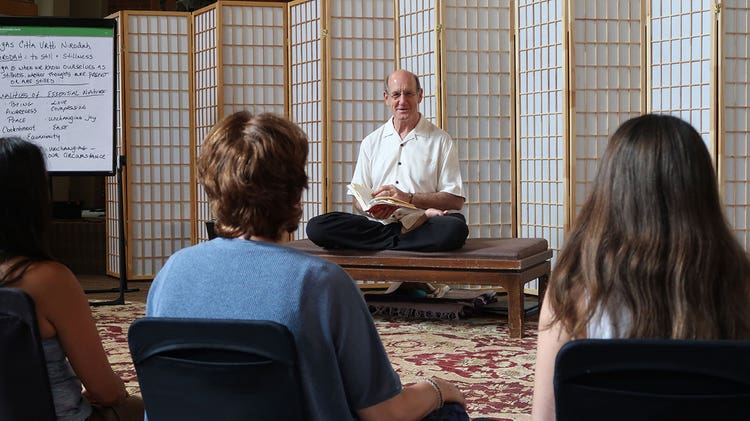
Miller says practitioners may find that their sleep improves. “What we’re teaching is the skills that help turn down those cortisol fight-flight hormones and turn on the more healing aspects of the immune system and the parasympathetic nervous system,” he explains. IRest Yoga Nidra helps to alleviate stress, anxiety, fear and depression; manage chronic and acute pain; heighten energy levels; improve a sense of control and interpersonal relationships; and heal unresolved issues and traumas.
Most of all, Miller says, iRest Yoga Nidra helps us recognize an underlying peace of mind that is always present within us, no matter what circumstances we are facing in life.
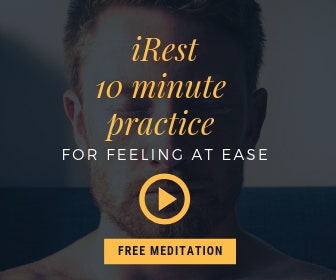
Find More Meditations and a brief introduction to iRest at www.irest.org/try-irest-now.
Video credit: wavebreakvideo, Adobe Stock
Photo credit: Nik Shuliahin, Unsplash; VISUALSPECTRUM, Stocksy; Devin Edwards, Unsplash; iRest Institute